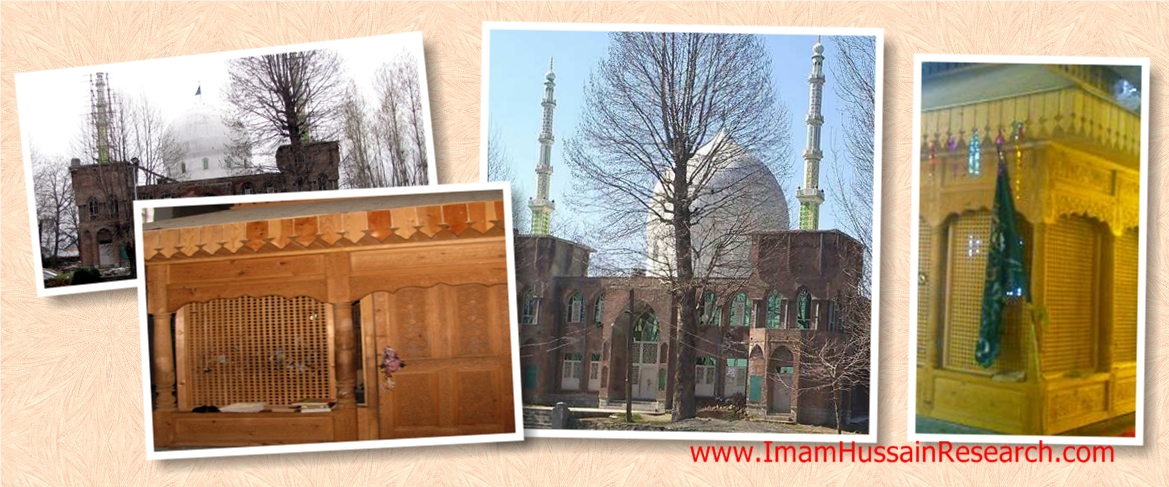Shrine of Mir Shams-ud-Din Araqi is also situated in Chadura. Mir Syed Shamsuddin died in Zadibal and was buried at Astan e shareef, Zadibal, but due to political opposition his coffin was taken to Chadoora tehsil in Budgam district.
The shrine features exquisite architecture typical of Kashmiri Muslim heritage, with beautiful wooden carvings and intricate designs. Devotees and pilgrims from various backgrounds visit the shrine to seek blessings, offer prayers, and immerse themselves in the spiritual ambiance.
The Shrine of Shamsudin Iraqi, located in Chadura, Kashmir, is a place of spiritual significance for followers of Islam, particularly those who adhere to Sufi beliefs. Shamsudin Iraqi, also known as Shams-i Tabrīzī, was a prominent Persian mystic and poet of the 13th century. His teachings and poetry are highly regarded in Sufism, a mystical branch of Islam that emphasizes the inward search for God and the purification of the soul.
Location: The shrine is situated in Chadura, a town in the Budgam district of Jammu and Kashmir, India. It is nestled amidst the natural beauty of the Kashmir Valley, surrounded by picturesque landscapes and serene surroundings.
Historical Significance: Shamsudin Iraqi is remembered for his profound spiritual insights and his association with the renowned Sufi poet Rumi. The relationship between Shamsudin Iraqi and Rumi is often described as that of a spiritual mentor and a disciple. Their deep connection and spiritual discourse played a pivotal role in shaping Rumi’s spiritual journey and his subsequent poetic expressions.
Spiritual Legacy: Shamsudin Iraqi’s poetry and teachings emphasize the concept of divine love, the path of self-discovery, and the intimate relationship between the seeker and the Divine. His writings reflect the Sufi ideals of unity, humility, and the pursuit of truth.
Annual Observances: The shrine of Shamsudin Iraqi in Chadura becomes a place of congregation and spiritual reflection, particularly during specific times of the year, such as his death anniversary or Urs. Devotees gather to pay their respects, offer prayers, and seek spiritual blessings.
Architectural Features: The shrine’s architecture often reflects the local Kashmiri style, blending traditional Islamic and regional elements. The design of the shrine, as well as the surrounding courtyards and gardens, offers a tranquil and contemplative atmosphere for visitors.
Cultural Significance: The shrine of Shamsudin Iraqi holds cultural significance as a place where people come not only for spiritual solace but also to engage with the rich Sufi heritage of the region. It serves as a reminder of the enduring influence of Sufism on the cultural and spiritual fabric of Kashmir.
Pilgrimage and Reflection: For those seeking spiritual insight, guidance, or a place for inner reflection, the Shrine of Shamsudin Iraqi provides a space to connect with the teachings and legacy of this revered Sufi mystic.
The shrine stands as a testament to the enduring impact of Shamsudin Iraqi’s spiritual insights and his contributions to the world of Sufi poetry and mysticism. It continues to attract pilgrims, seekers, and those who appreciate the profound wisdom of Sufi thought.

